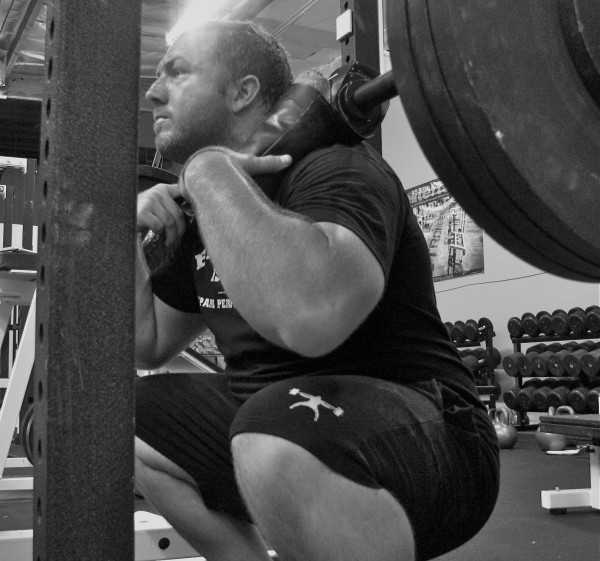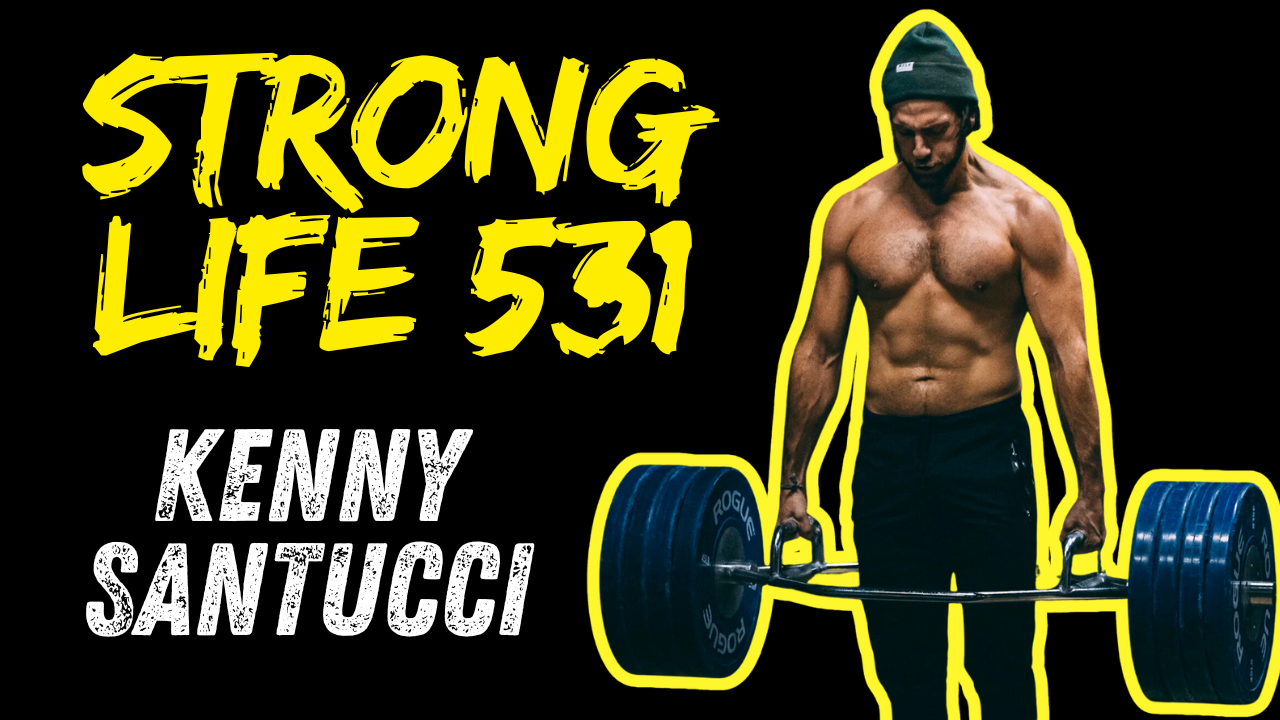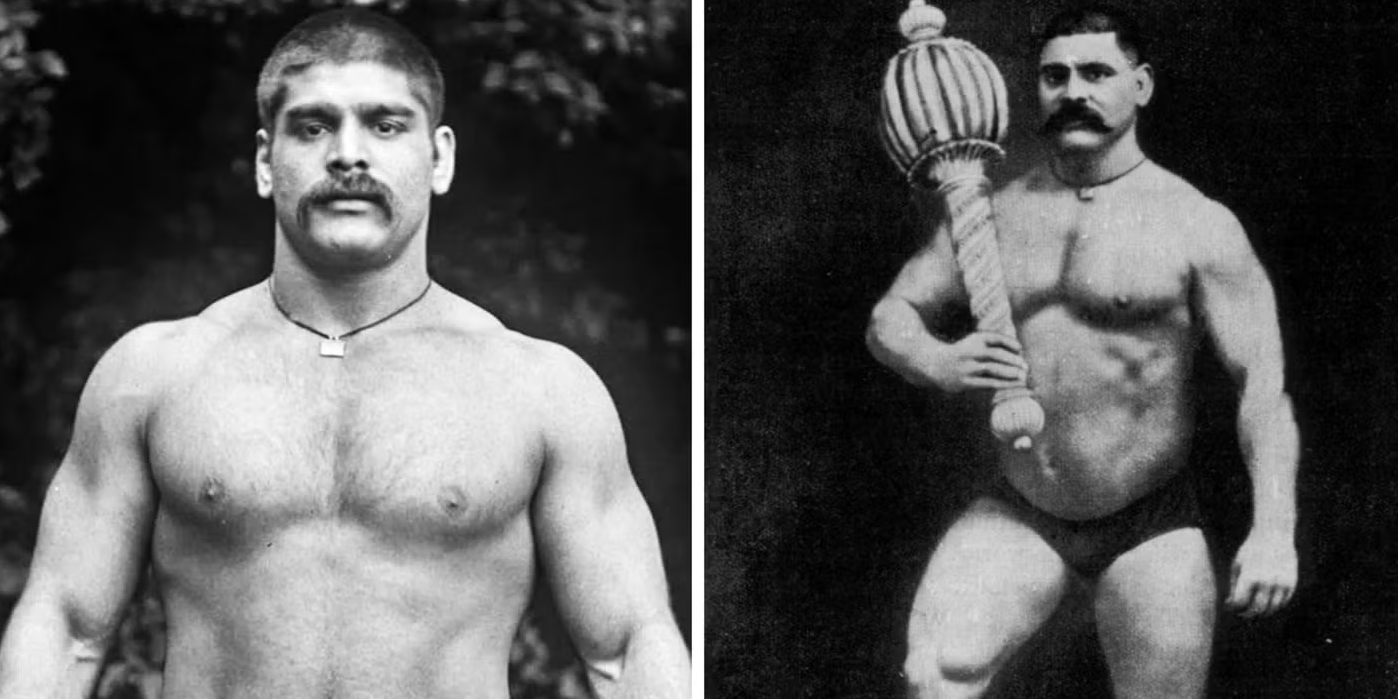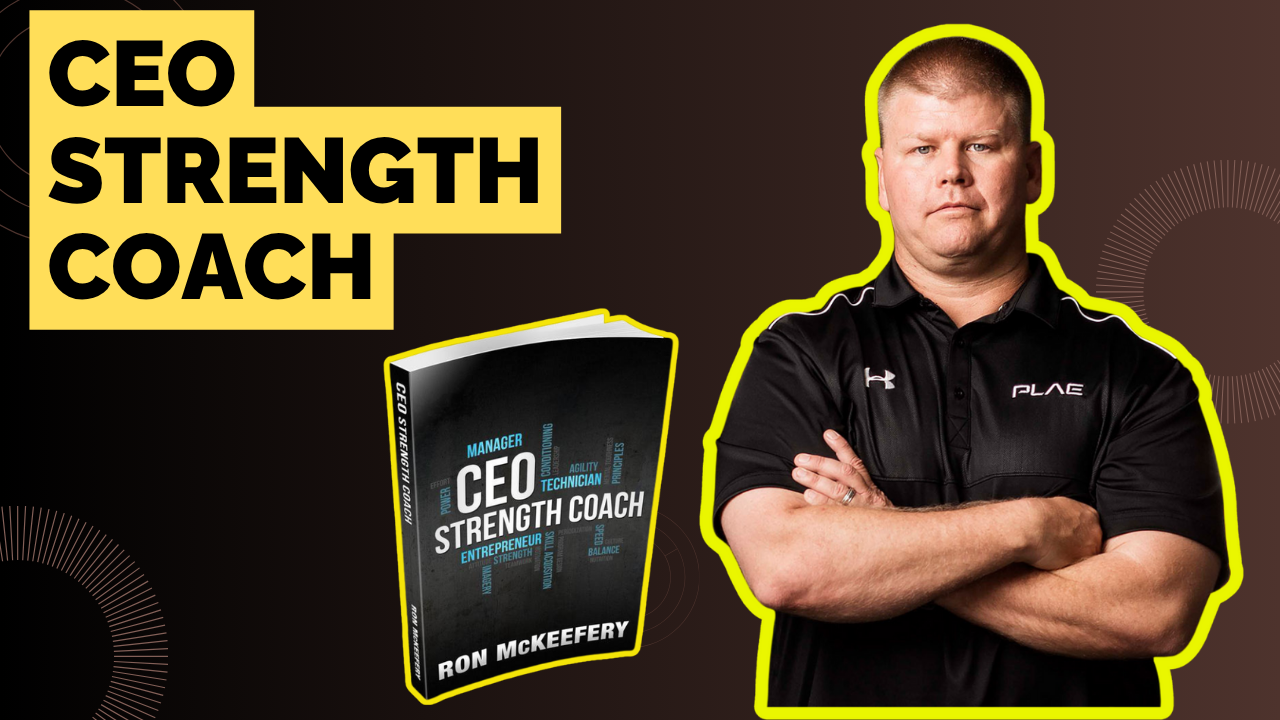Guest Post by Chad Wesley Smith
The squat is the best! Plain and simple. If you want to run faster, jump higher, tackle harder or just be stronger and hence, more awesome, the squat is your best ticket. The squat is the ultimate developer of quad, hamstring, glute and hip strength and these are the muscles most responsible for sprinting and jumping ability. So whether your goal is powerlifting dominance, weightlifting supremacy or improved physique and athletic performance, you need to squat and not just squat, squat heavy and properly.
I know a thing or two about squatting big…
[youtube width="640" height="360"]http://www.youtube.com/watch?v=tpWRuthmIdY[/youtube]
Here are some tips to improve your squat training and become an all-around athletic badass…
Squat To Depth, ALL THE TIME - Whether your goal is to become a great powerlifter or improve your sprinting and jumping, you need to squat to or below parallel. As the American Record holder in the squat (raw w/ wraps in the 308s class) with a 905 pound squat, I have made it my motto to “Leave No Doubt” when it comes to my squat. I don’t want to even have to look for 3 white lights when I finish a squat, because I should already know that I hit proper depth.
Now, this doesn’t mean that you should squat ass to ankles in a powerlifting meet, squat to where you need to for it to pass because you don’t get bonus pounds for extra unnecessary depth, but at the same time don’t try and cut it high and get a gift from the judges. Squatting to full depth though should be the goal for someone looking to maximize their athleticism-the only caveat to this being if you lack proper mobility to safely squat this deep.
Squatting below parallel is the best way to develop hamstring and glute strength, as well as improve hip and ankle mobility for the athlete, all important characteristics to being a successful athlete in any sport. Film your squats from the side to check your depth or have your training partners asses your depth and remember, “Friends Don’t Let Friends Squat High!” Quit cheating yourself and your gains with high squats.
Improve Your Mobility - As I mentioned above, the only time I don’t advocate squatting to proper depth is if you or your athlete’s lack the necessary mobility to safely do so. A lack of mobility will make it difficult for you to hit proper depth and if you are able to hit depth, it will be difficult to maintain your strongest body position. The lack of mobility that can occur from tight quads, hamstrings, and hips are likely to lead to injury and if you are injured, you can’t squat and you can’t improve. Consistently stretching your hips, quads, and hamstrings will help you maintain better squatting positions, so you can stay healthy and train hard!
Check out these tips to help you improve your mobility for the squat…
[youtube width="640" height="360"]http://www.youtube.com/watch?v=XztDfH2LQ74[/youtube]
Speed, Speed, Speed - The best way to squat big weight is to squat FAST. There is plenty of talk about addressing sticking points in your lift, but the simplest way to blast through a sticking point is to generate greater speed and force in your lift. From 135 to your max, you need to be trying to drive the bar through the roof. There are good arguments on both sides of the issue regarding speed work, I prefer to think about every rep as speed work, you should always focus on imparting maximal force to the bar.
When you are looking to develop great bar speed you need to jump and do submaximal work. Jumps of all kinds (box jumps, squat jumps, jumps for distance, depth jumps) will all help improve your Rate of Force Development so make sure you are jumping at least once per week.
Jumps not only will improve your RFD, it will also prime your central nervous system for heavy squatting to follow, this effect is called Post Activation Potentiation. Submaximal work for the squat can be used as a separate training day, or as backdown sets after your primary squat training. I suggest you use straight weight (no bands or chains) in the 55-70% range for sets of 2-5 reps and focus on performing at least 1 rep per second.
Check out these jumping variations to help build explosive power in the squat…
[youtube width="640" height="360"]http://www.youtube.com/watch?v=OyF8H0wYUPk[/youtube]
Dominate the Weight - Do you know how I put 905 pounds on my back and smashed it for the American Record (raw w/ wraps-308 class)? Confidence. One of the most common mistakes I see people making when attempting a max squat is to slow down their descent.
This happens for 1 reason…fear.
There can be no fear when getting under heavy weight.
This supreme confidence comes from proper preparation, both physically and mentally. If you have trained to the best of your abilities there is no reason to have a doubt in your mind when stepping on the platform. Not only must your training be great, you must also prepare your mind.
905 was a number that was constantly in my mind leading up to squatting it, mentally I owned 905. I had squatted it hundreds, if not thousands of times in my mind. Fill your mind with positive mental imagery and know that you own whatever weight is going on your back, unrack it powerfully, descend with it confidently and then explode with it out of the hole; be on a mission to lockout.
Build Strength Out of the Hole - The most common place for a raw lifter to miss a max squat is right out of the hole (ie. The bottom portion of the lift). Putting extra attention to this portion of the lift is what I believe is most responsible for improving my squat from 800 to 905 pounds over a 10 month period.
The two best exercises to improve your strength out of the hole are dead squats and pause squats.
Dead squats are performed by placing the pins in a safety rack at 1” above parallel, getting under the bar in that position and squatting up from there.
Try this 3 week training cycle of dead squats…
Week 1-10 sets of 1 at 60% with 30 seconds between sets
Week 2-7 sets of 1 at 67.% with 45 seconds between sets
Week 3-4 sets of 1 at 75% with 1 minute between sets
Pause squats are another great option to improve your strength and power out of the hole in the squat. Pause squats done with 1, 3, 5 or a 7 second pause will not only help you build strength by diminishing or eliminating the benefits of the stretch reflex out of the hole, they will also build static, supportive strength in the lower back, hips and abs, teach you to stay tight and help your body find its strongest position.
Try this 3 week training cycle of pause squats…
Week 1-3 sets of 5 reps with 50% using a 7 second pause
Week 2-3 sets of 4 reps with 60% using a 5 second pause
Week 3-3 sets of 3 reps with 70% using a 3 second pause
Building power out of the bottom of a squat will help you blast through sticking points…
[youtube width="640" height="360"]http://www.youtube.com/watch?v=6xw8PCmdzWI[/youtube]
BUILD UP YOUR BACK - Bill Kazmaier, arguably the strongest man of all-time, said that “A strong back equals a strong man”, I don’t argue with Kaz and neither should you. Back strength is often the limiting factor in someone’s ability to squat.
If you back (upper and lower) is weak, you won’t be able to support heavy weight. Your hamstrings, quads, hips and glutes may be strong enough to squat 500 pounds, but if your back can’t support it, you aren’t going to squat it.
A great starting place to improve your lower back strength is to avoid wearing a lifting belt as much as possible. Not wearing a belt will make your midsection work much harder to support the weight and in turn, make it that much stronger when a belt is worn.
Another great exercise to build the static supportive strength necessary in the lower back for a huge squat are deadlift hypers. A deadlift hyper is a combination of a 45 degree back raise and a deadlift. Set up the bar on the floor, take a snatch grip on it and do a back raise while holding the bar.
I have personally gone over 300 pounds on this exercise for a set of 5. Adding in a 1-3 second static hold at the top of each rep will also be effective. When looking to strengthen your upper back to improve your squat, all type of rowing and pulling variations will help.
My personal favorite is the chest supported row and again adding in a static hold at the top of each rep for 1-3 seconds will be of tremendous benefit. Front squats or safety squat bar squats are also a great way to build up your upper back in a very specific manner. I would definitely encourage you to include these variations in your training.
Hone Your Technique - If your technique in the squat is poor you are wasting your strength. Great technique is what allows great strength to be expressed effectively. Not everybody’s technique will be the same, individual body dimensions, leverages, strengths and weaknesses will dictate what technique is most effective for you. From an empty bar to your max, you must practice great technique on every rep.
Great technique starts with a great setup so get TIGHT and create a good shelf for the bar while driving your sternum up and your head into your traps. Technique can only be perfected through practice, so make sure you are turning the volume up on your squat training. I have had squat sessions with as many as 18 work sets of squats and squat variations.
With that being said, if you want to be a great squatter and have great technique, you must practice that skill, you must squat. The Barbell Back Squat must be the foundation of your training and front squats, box squats, pause squats, dead squats, etc are there to supplement that work. I start every squat session with the back squat and work on other things after.
If you want to be great at something you have to do that thing, not just something similar to it. I can confidently say that my best squat ever, 905 pounds, was also my most technically proficient squat ever.
These 7 tips are only a glimpse into what is necessary to become a great squatter and strength athlete but they will give you a great start on the road to success and building a legendary squat.
Chad Wesley Smith is the founder and head physical preparation coach at Juggernaut Training Systems. Chad has a diverse athletic background, winning two national championships in the shot put, setting the American Record in the squat (905 in the 308 class, raw w/ wraps) and most recently winning the 2012 North American Strongman championship, where he earned his pro card.
For More Info on Chad's Training Methods Please Visit http://jtsstrength.com





4 Responses
Chad,
great article. I’m no squat maniac, so the speed part was really new to me. Will try to incorporate the tips in my training. Thx.
LLLOOOVVVEEE to squat! Never did because I thought I could not due to bad knees. Blocked out the Defeatist attitude and researched different squat variations.
Still have issues with back squat, but love to rock front squat arse to heels, and safety bar squat deep.
Good Stuff!
How many days a week do we incorporate the dead & pause 3 week training cycle? Is there a break between the two cycles or do you begin the pause squat after finishing the 3 week dead squat? Do you continue with your normal squat schedule during the week or just strickly do the dead & pause squats for the total 6 weeks? Thanks for sharing!
Hey Ben,
Some of those answers depend on your overall program, training age, preparedness levels but generally I would say that you should pause or dead squat 1x/week after your primary squat work. You could either run multiple cycle of the same movement for 3-4 rounds (9-12 weeks, more if you are deloading every 4-6 weeks)) or alternate every 3 weeks on both, just make sure that if you alternate exercises often that you exercise pool is small enough so that you can actually gauge your progress.
There are 2 ways to implement pause and dead squats into your program, either (my preferred way) of performing them after your primary squat work. For example, Squat-Up to 3 sets of 2-5 reps, Dead Squats for reps listed in article, GHRs 3×12-15, Split Squats 2×8 each leg, abs OR you could perform dead/pause work on its own day so you would squat heavy on Monday and then do an assistance squat day with dead or pause squats as your primary movement on Thursday/Friday.
Hope this answers your questions,
Chad